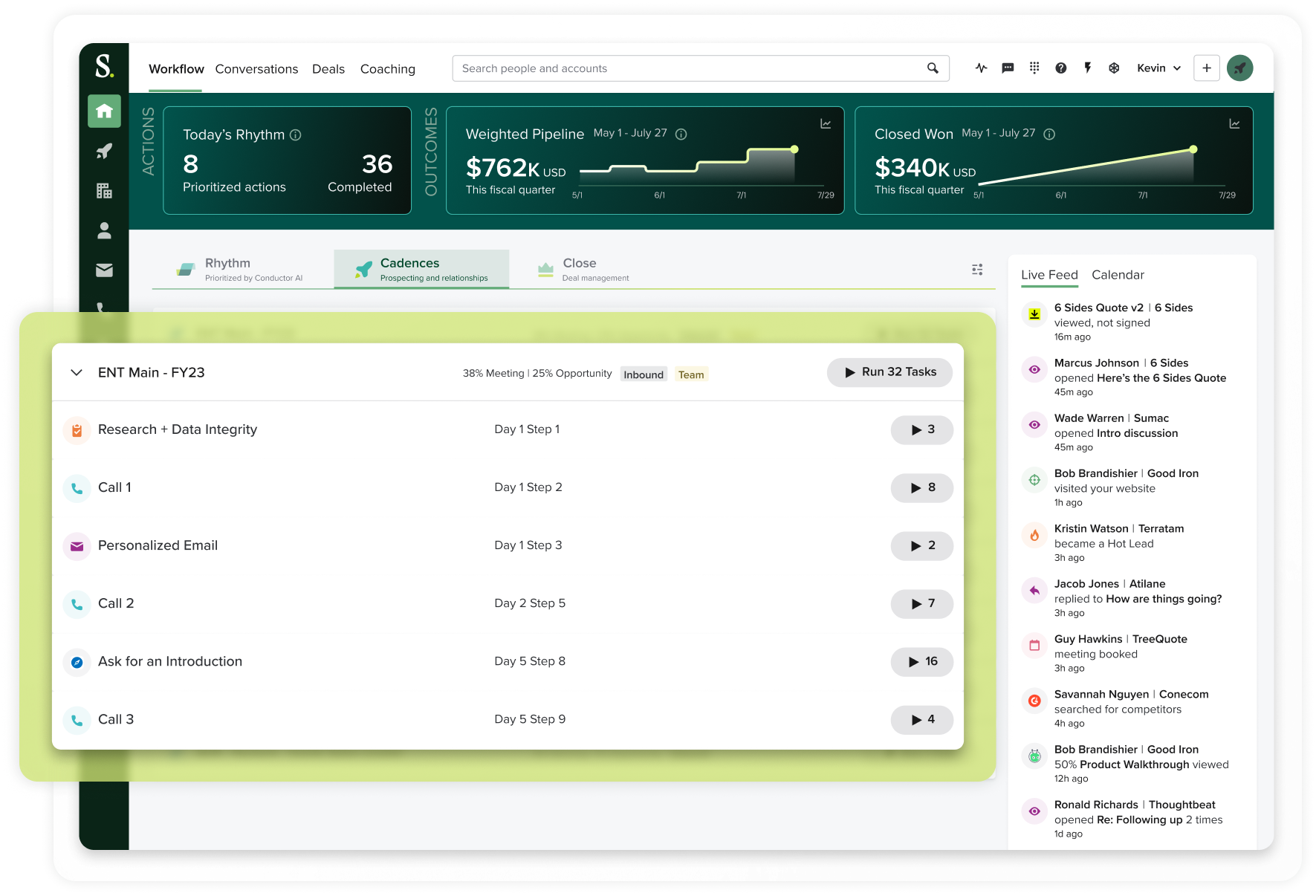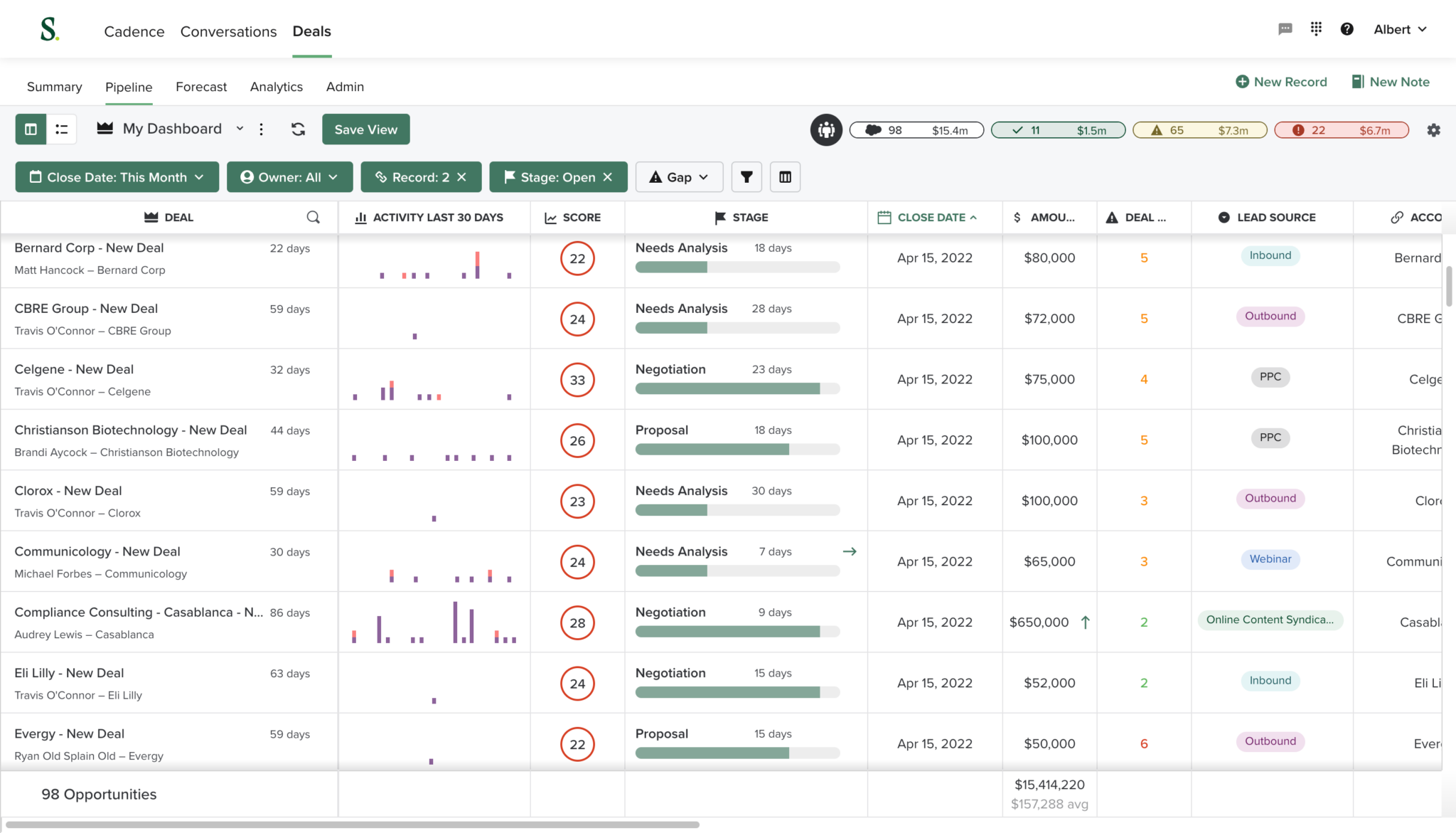
Cadence
Catapult sales performance with a massive pipeline of qualified leads.
Build more pipeline and uplevel customer engagement with predictability across the full sales cycle.
Find the right edition for your team
Essentials
Grow pipeline & gain insight
Advanced
Convert deals & win customers
Premier
Generate predictable revenue,
quarter after quarter
quarter after quarter



